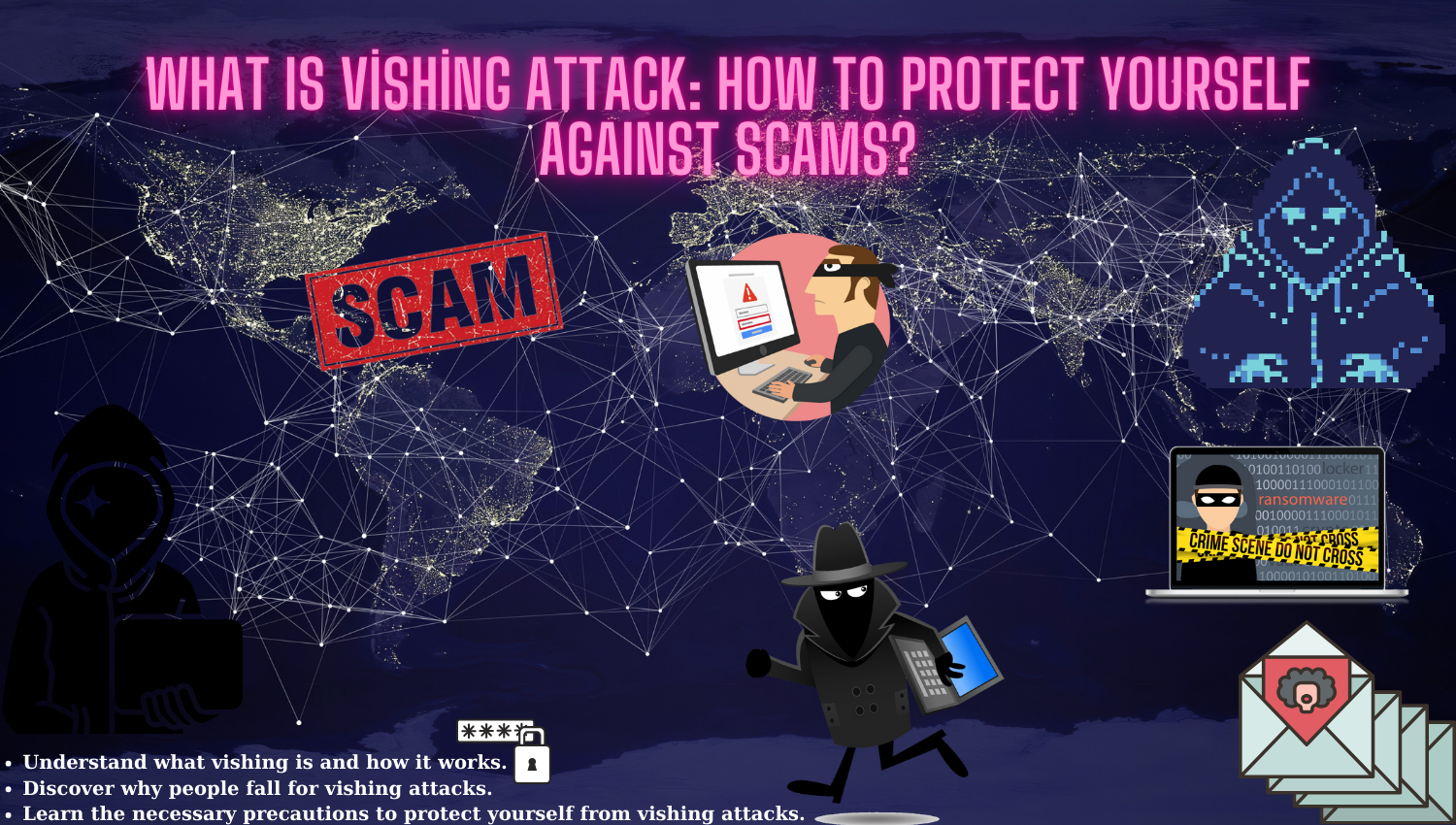Introduction
As the digital age advances, the diversity and complexity of cyberattacks are increasing. One such type of attack is vishing (voice phishing), which targets individuals through phone calls to trick them into revealing personal and financial information. Vishing attacks are typically carried out using social engineering techniques, making them appear as though they come from a trusted source. In this article, we will explore what vishing attacks are, why they are so effective, and how you can protect yourself from such threats.
Learning Objectives
- Understand what vishing is and how it works.
- Discover why people fall for vishing attacks.
- Learn the necessary precautions to protect yourself from vishing attacks.
What is a Vishing Attack?
Vishing is a type of cyberattack that involves the theft of personal or financial information through voice communication channels. Attackers typically impersonate a trusted organization or individual to deceive the victim and obtain sensitive information. These attacks can be carried out through automated calls, voice messages, or direct phone conversations. Vishing attacks can lead to identity theft, fraud, and financial losses by gaining the victim’s trust (What is Cisco?).
Python Crash Course
Python Crash Course, 3rd Edition: A Hands-On, Project-Based Introduction to Programming 3rd Edition
-10% $24.30 on AmazonWhy Do People Fall for Vishing Attacks?
There are several reasons why vishing attacks are so effective:
- Trustworthiness: Attackers often impersonate reliable sources, such as banks, government agencies, or well-known companies. This makes the victim more vulnerable to the attack.
- Urgency and Fear: Attackers create a sense of urgency (e.g., freezing an account, requiring a large payment) and pressure the victim to act quickly. Decisions made in haste can impair logical thinking.
- Professional Language: Attackers use professional language and tactics to gain the victim’s trust, making the situation seem legitimate (NetworkAssessment: Network Compromise Assessment Tool).
- Lack of Awareness: Many people are unaware of vishing attacks or do not know how to protect themselves against such threats. This lack of knowledge increases the likelihood of a successful attack.
Example Vishing Attack Scenario
Scenario: Fake Bank Call
Attacker: Hello, good day. I’m Mr. Smith from the security department at X Bank. We’ve detected a suspicious transaction on your account, and we urgently need you to verify some information. Can you assist me?
- Victim: Hello, sure. What seems to be the problem?
- Attacker: A large payment was just attempted from your account, but it was blocked by our system. Was this transaction authorized by you?
- Victim: No, I didn’t authorize any such transaction. What should I do?
- Attacker: First, to secure your account, we need to perform an identity verification. Please confirm your card number and PIN for security purposes.
- Victim: Yes, of course. My card number is 1234 5678 9012 3456, and my PIN is 1234.
- Attacker: Thank you. I’ll take immediate action to secure your account. But please make sure not to share this information with anyone.
- Victim: Of course, I won’t share it with anyone.
- Attacker: All right, the process is complete. If there’s any further issue, we’ll contact you again. Have a good day.
- Victim: Thank you, have a good day.
Linux Commands Line Mouse pad
Linux Commands Line Mouse pad – Extended Large Cheat Sheet Mousepad. Shortcuts to Kali/Red Hat/Ubuntu/OpenSUSE/Arch/Debian/Unix Programmer. Non-Slip Gaming Desk mat
$20.95 on AmazonIn this scenario, the attacker gains the victim’s trust by pretending to be a representative of the bank and successfully extracts personal information. By sharing these details, the victim inadvertently exposes themselves to potential fraud.
How to Protect Yourself from Vishing Attacks
You can protect yourself from vishing attacks by taking the following precautions:
- Do Not Share Information Over the Phone: Banks and other official organizations typically do not ask for personal information over the phone. In case of suspicion, hang up and call the organization’s official number.
- Verify Incoming Calls: Verify the legitimacy of the caller by contacting the organization directly using the number provided on their official website. Remember, caller ID can be spoofed.
- Research Suspicious Calls: If a call seems suspicious, research it online to see if it’s a known scam.
- Use Call Recording: Record suspicious calls, which you can later review. This can also be useful in tracking down attackers.
- Education and Awareness: Stay informed about vishing attacks and educate those around you. Being aware is the first step in preventing these attacks.
Conclusion
Vishing attacks are a serious cyber threat that aim to steal personal and financial information via phone calls. The most effective way to protect yourself against these attacks is by staying informed, being cautious in suspicious situations, and never acting in haste. Remember, the stronger your security measures, the safer you will be from vishing attacks.



